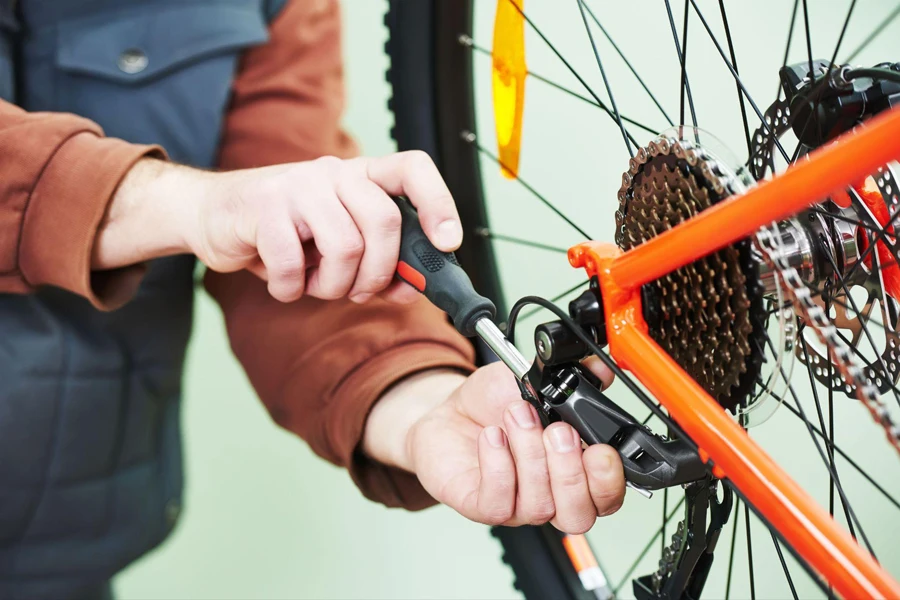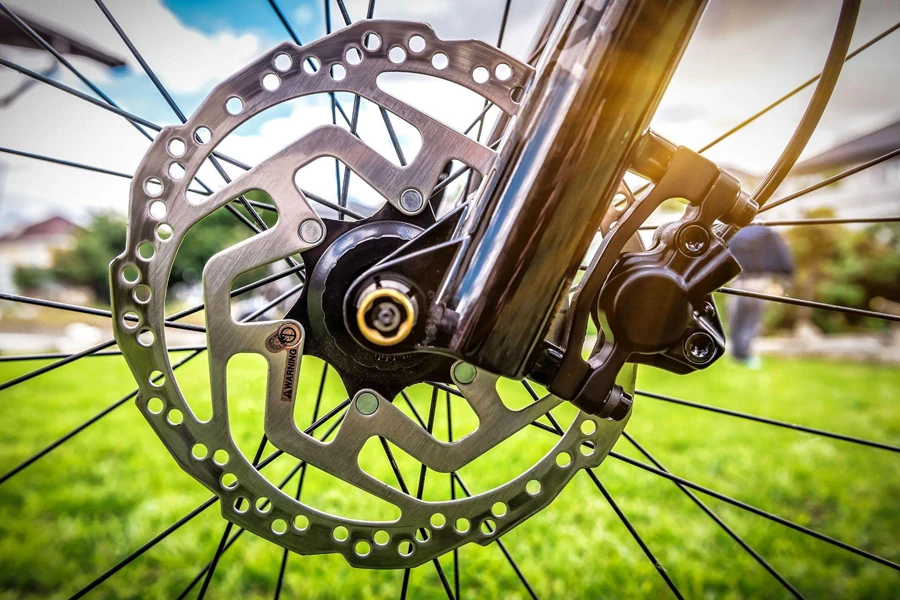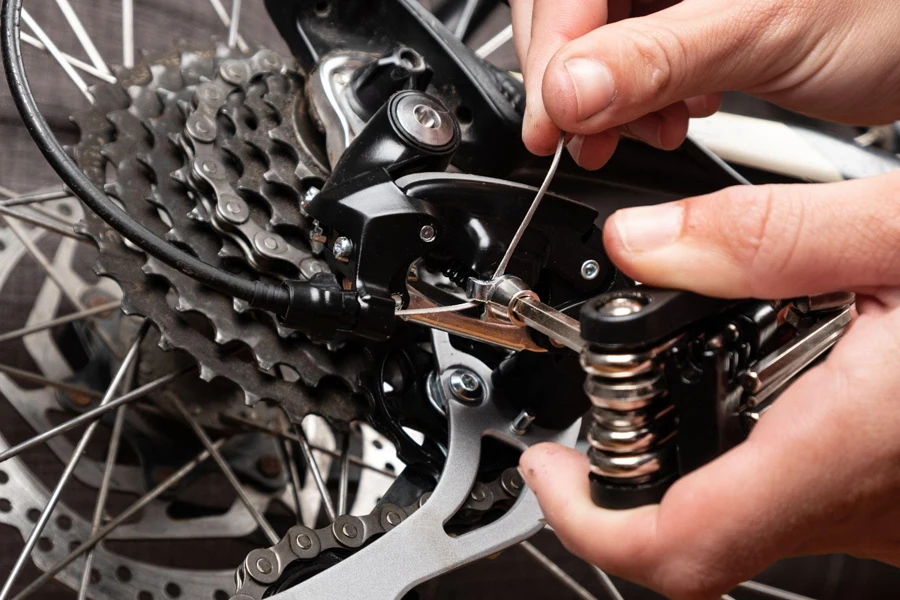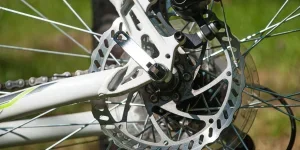Table of Contents
● Introduction
● Bicycle brakes Market Overview
● Key Considerations of Selection
● Top Picks for 2024
● Conclusion
Introduction
Selecting the right bicycle brake is crucial for safety, performance, and overall cycling enjoyment. As the cycling industry continues to evolve, understanding the latest advancements and options in braking technology becomes paramount for business professionals and online retailers to guide cyclists of all levels. This guide aims to provide comprehensive insights into selecting the best bicycle brake, ensuring the ride of your customer is both safe and exhilarating.
Bicycle Brakes Market Overview
The bicycle brake market has seen significant growth, driven by the increasing popularity of cycling as a sport and mode of transportation. The global bicycle brake market size is projected to grow from USD 776.1 million in 2023 to USD 948.5 million by 2029, which indicates a 7% Compound Annual Growth Rate (CAGR) during this period. The market is characterized by a diverse range of products, including mechanical disc brakes, hydraulic disc brakes, rim brakes, and emerging technologies like electronic braking systems. The competition among leading manufacturers such as Shimano, SRAM, and Campagnolo is fierce, with each striving to offer innovative solutions that enhance braking performance and reliability.

Key Considerations of Selection
Understanding Brake Types
In the world of cycling, brake systems are a critical component for safety and performance, with Mechanical Disc Brakes, Hydraulic Disc Brakes, and Rim Brakes being the primary types each suited to different riding styles and conditions.
Mechanical Disc Brakes stand out for their reliable performance across various conditions, making them an excellent choice for beginners. These brakes use a cable to actuate the calipers, which in turn press the brake pads against a rotor mounted to the wheel hub. This system is less affected by wet or muddy conditions compared to rim brakes, offering consistent stopping power. The ease of maintenance and adjustment, due to their mechanical nature, also makes them a favored option for those new to cycling or those who prefer to do their own bike maintenance.
Hydraulic Disc Brakes elevate the braking experience by providing superior stopping power and modulation, thanks to the use of fluid within a sealed system to actuate the brake pads. This type of brake is particularly beneficial for aggressive riders or those tackling challenging terrains, such as mountain biking trails or steep urban descents. The hydraulic system multiplies the force applied by the rider’s fingers on the brake levers, resulting in efficient and controlled braking with minimal effort. However, they require more specialized knowledge for maintenance and setup compared to mechanical disc brakes.

Rim Brakes are the traditional choice, known for their simplicity and lightweight design. They work by applying brake pads directly to the sides of the wheel’s rim. This type of brake system is especially suitable for road cyclists who prioritize speed and efficiency, as rim brakes are typically lighter than disc brakes and offer sufficient stopping power for the high-speed, smooth-surface conditions of road cycling. However, their performance can diminish in wet or dirty conditions, as the braking surface is directly exposed to the elements.
Performance in Condition
In wet and muddy conditions, disc brakes, particularly hydraulic ones, stand out for their consistent and reliable performance. Unlike rim brakes, where braking efficiency can dramatically decrease due to wet rims, disc brakes maintain their stopping power because the braking mechanism is located at the center of the wheel, away from the majority of mud and water that can splash up from the road surface. Hydraulic disc brakes further enhance this performance through their sealed system, which prevents water ingress and maintains consistent brake pressure, even in adverse conditions.
Conversely, in dry and dusty conditions, rim brakes are generally sufficient and can provide effective stopping power. The simplicity of rim brakes makes them lighter and easier to maintain, which is particularly advantageous in conditions where dust and debris can accumulate. However, regular cleaning and maintenance are crucial to prevent the build-up of dust and grime, which can reduce braking efficiency over time. Ensuring that the rim surface and brake pads are clean will help maintain the optimal performance of rim brakes in dry conditions.

Compatibility and Installation
Frame and Fork Compatibility: It’s crucial to ensure that the brake system you choose is compatible with your bicycle’s frame and fork, especially when it comes to disc brakes. Frames and forks designed for disc brakes will have specific mounts — either post mount or flat mount — to which the brake calipers are attached. These mounts must align with the rotor size you intend to use, and in some cases, adapters may be required to fit the brake calipers to the frame or fork. For rim brakes, the frame and fork must have brake mounting holes at the correct distances from the rims to ensure the brake pads can properly contact the braking surface.
Ease of Installation: Generally, mechanical disc brakes are known for their ease of installation and adjustment. This is because they use a cable system similar to traditional rim brakes, making them more straightforward for those familiar with bicycle maintenance. The cable tension and brake pad alignment can be adjusted with simple tools, and there’s no need to deal with hydraulic fluid. On the other hand, hydraulic disc brakes, while offering superior braking performance and modulation, can be more complex to install. Setting up a hydraulic system involves cutting and fitting hydraulic hoses, bleeding the system to remove air bubbles, and ensuring that the hydraulic fluid is at the correct level, which might require specialized tools and knowledge.

Top Picks for 2024
For cyclists in pursuit of unparalleled performance across all terrains, the Shimano XT M8100 Hydraulic Disc Brake emerges as the top contender. Renowned for its exceptional stopping power, this brake system allows for precise speed control, making it a reliable companion for both steep descents and rapid sprints. The modulation — the ability to finely adjust braking intensity — ensures a smooth and responsive riding experience, crucial for navigating technical trails or busy urban environments. Maintenance and adjustments are straightforward, thanks to its user-friendly design, making it an ideal choice for riders who demand high performance without the hassle of complex upkeep.
The SRAM Level TLM Hydraulic Disc Brake stands out as the best value option, striking an impressive balance between cost and performance. It’s a lightweight system that doesn’t skimp on reliability or modulation, ensuring consistent braking power without breaking the bank. This brake is perfect for budget-conscious riders who are unwilling to compromise on quality, offering a high-performance braking solution that is both affordable and dependable.
For road cyclists who prioritize speed and efficiency, the Campagnolo Record Direct Mount Rim Brake is the go-to choice. This brake combines superior braking power and fine modulation in a sleek, lightweight package that enhances the aesthetic and performance of any road bike. Its design is not only functional but also complements the streamlined look of modern road bicycles, making it a favorite among riders who value both form and function.

Mountain bikers facing rugged trails and demanding descents will find their match in the SRAM Code RSC Hydraulic Disc Brake. Designed to withstand the rigors of mountain biking, this brake system offers unmatched stopping power and control, essential for navigating steep and challenging terrains. Its robust construction ensures reliability, giving riders the confidence to tackle any trail, no matter how demanding.
For those new to cycling, the Tektro HD-M285 Hydraulic Disc Brake offers a reliable and safe braking solution. It’s an affordable option that doesn’t compromise on performance, providing sufficient stopping power for beginners to ride confidently. Easy to install and maintain, this brake system is ideal for new riders looking to equip their bikes with a dependable braking system as they embark on their cycling journey.
Conclusion
Selecting the right bicycle brake is a critical decision that impacts your customers’ safety and enjoyment on the bike. By considering the key factors outlined in this guide and exploring our top picks for 2024, business professionals and retailers can help the consumers make informed choices that meet their needs and preferences. Remember, the best brake is one that offers reliable performance, suits your riding style, and fits within the budget.




